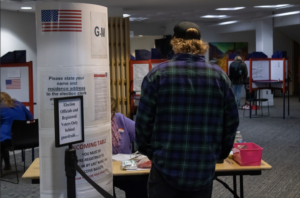After a bizarre and exhausting academic year, students at the University of Maine are finally dragging themselves to the finish line of finals week, and while the restrictions of the pandemic are especially regrettable for graduates, they illuminate the truth in those cliches which many of us take for granted: the importance of being part of a community.
In less than two weeks, members of the class of 2021 will be moving on to new professional and academic opportunities, with the majority doing so outside of Maine, according to research by Zippia. With those new experiences will come the inevitable anxieties of building new lives and relationships in an unfamiliar place, but access to local journalism can be an incredible and undervalued resource for this pursuit.
For those graduates who will not be pursuing further education, the fact of the matter is that building a life beyond the confines of casual acquaintances at work can be a daunting task.
Rebecca G. Adams, a professor of sociology and gerontology at the University of North Carolina at Greensboro, told the New York Times that so many people make their closest friends in college because it is an environment that promotes the three widely-accepted factors for nurturing friendships: proximity, repeated and spontaneous interactions and settings that encourage meaningful social engagement.
Life during the COVID-19 pandemic has been something of a trial run in this way, as it has similarly stifled these factors in students’ everyday lives.
At The Maine Campus, staff members have found just as well as anyone that maintaining a sense of community and camaraderie amidst pandemic restrictions can be a struggle, even with the modern “miracles” of Zoom, email, social media, etc. to fill the void of social interaction. However, the fracturing of UMaine’s student population made telling its stories seem more important than ever, and so contributors, editors and production staff persevered.
Not quite the “journalism heroes of the pandemic era” that The Washington Post over-eagerly slapped on one of its headlines, student journalists simply continued to do their best to connect the members of their communities in the same way they always have. This is a service that community journalism outlets have historically performed magnificently, and they can serve as invaluable guides to the nuances and storylines of the places where graduates will work, live, socialize and vote.
However, local news organizations are a dying breed, as many have disappeared since online traffic giants like Google and Facebook began to dominate the advertising market and rendered traditional news revenue models unsustainable.
According to a 2019 study by the Brookings Institute, between 2008 and 2018 the news industry experienced a 68% drop in advertising revenue. This had a devastating effect on local news outlets especially, who have struggled to transition to subscriber-based or nonprofit models, and, as of 2019, over 65 million Americans live in counties with only one local newspaper or none at all.
Living in one of these “news deserts” may not seem like a major crisis, but without local news, the news consumption of entire communities becomes focalized through the perspective of the national media, rather than the perspective of those that live in their own town or county. Brookings also found that voters in communities where local newspapers closed were less likely to split their votes. In essence, when local news disappears, the individual values of a community can very quickly fade into the overwhelmingly polarized political landscape.
Many opinion columnists in national news outlets like The New Republic and The Hill have suggested that local newspapers are so vital to the health and civic engagement of communities that they should be accounted for in President Biden’s $3-4 trillion infrastructure plan. According to the Columbia Journalism Review, many independent newspapers facing a bleak future have rallied behind proposals like the Local Journalism Sustainability Act, which would subsidize the expenses of news subscribers, local journalists and small business advertisers with tax write-offs, while economists prefer simply providing consumers with vouchers that they can use to pay for the subscriptions of the local outlet of their choice.
As with most solutions proposed at the federal level, these kinds of legislation could solve many of the news industry’s problems, or they could never see the light of day. The fact remains that there is a correlation between a healthy, civically engaged community, and healthy local news coverage.
As future community members across Maine, the United States and the world, who will inevitably struggle to find their own place within them, there is something to be said for paying $30-50 for a year’s subscription to the local paper, as a first step toward expanding your local engagement. If this year has taught us anything, it’s that our communities and our abilities to communicate with each other are more than worth investing in.









